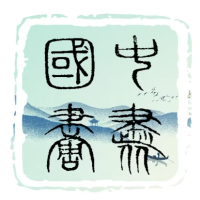方增先,辛未年生于浙江浦江西塘下(今属兰溪),二十世纪后半叶现实主义人物画代表,新浙派人物画之奠基者与推动者。
Fang Zengxian, born in the year of Xinwei in Xitangxia, Pujiang, Zhejiang (now part of Lanxi), is a representative of realist figure painting in the latter half of the 20th century. He is the founder and promoter of the "New Zhejiang School" figure painting.

方氏于二十世纪后半叶中国人物画中具重望,尤于现实主义画坛影响深远。其为新浙派人物画之开创者,艺途展现新中国肇建以来,画家适应时变,求索创新之历程。己丑年,新中国肇建,社会剧变,艺界亦同。传统中国画革新迫在眉睫,适应新时代需求,突破旧规,创出新内容、新形式国画,以应社会主义建设之需,成为五十年代画革之要务。方增先适逢其时,应运而起。
乙未年,浙江美术学院复设中国画系,方氏由油画转入国画,此变奠其人物画创新之基。于此关键时期,方氏善用学院资藏,汲中外艺术精华,以聪慧勤勉,融西方结构素描与中国水墨之精髓,尤写意花鸟之传统,创全新人画之法。
方增先于人物造型,创法大成,融合传统水墨与时代气息,开中国画现代化新篇。此法解人物造型诸多难题,于画史留新章。方氏探索,展独特视角,传承古艺精髓,注新时代精神,使人物画焕新机。
方氏人物画,基于“线性人体结构素描”,其法由法兰西明暗五调子素描,苏联契斯恰可夫分面法,美利坚伯里曼结构学,终归线之结构与团块表现,汇多国艺精华,践潘天寿线为主之论,革西方素描,答中国画需。
此法简易,迅为学子所喜,受学院重视,普及浙江美术学院国画教习,继而影响全国,成人物画教学基础。方增先于人物画现代化之大功,实为新浙派奠基者与领袖。
In the latter half of the 20th century, Fang held a significant position in Chinese figure painting, especially within the realist school, exerting far-reaching influence. As the founder of the New Zhejiang School, his artistic journey reflected the transformation and innovation of Chinese artists since the founding of the People's Republic of China. In the year of Jichou, with the establishment of New China, society underwent great changes, and so did the art world. The traditional Chinese painting needed urgent reform to meet the new era's demands, breaking old norms and creating new content and forms to serve socialist construction, making it the core task of art reform in the 1950s. Fang Zengxian rose to prominence during this critical time.
In the year of Yiwei, the Zhejiang Academy of Fine Arts reestablished the Chinese Painting Department, and Fang transitioned from oil painting to Chinese painting. This shift laid the foundation for his innovation in figure painting. During this crucial period, Fang made good use of the academy's resources, absorbing the essence of both Chinese and Western art. With wisdom and diligence, he integrated Western structural sketching with the essence of Chinese ink painting, especially the tradition of freehand flower-and-bird painting, creating a new method of figure painting.
Fang Zengxian achieved great success in figure modeling, successfully merging traditional ink with contemporary themes, opening a new chapter in the modernization of Chinese painting. This method solved many challenges in figure modeling, marking a new chapter in art history. Fang's exploration showed a unique perspective, inheriting the essence of ancient art while infusing new era spirit, revitalizing figure painting.
Fang's figure painting is based on "linear anatomical sketching," incorporating methods from French chiaroscuro, Soviet Chekhov's sectional drawing, and American Bridgman's structural approach, ultimately focusing on line structure and block expression. He integrated the artistic essence of various countries, realizing Pan Tianshou's principle of line dominance, reforming Western sketching methods, and meeting the needs of Chinese painting.
This method is simple and quickly became popular among students, receiving significant attention from the academy. It spread throughout Zhejiang Academy of Fine Arts and subsequently influenced art schools nationwide, becoming a foundational course in figure painting education. Fang Zengxian's contributions to the modernization of figure painting truly establish him as a founder and leader of the New Zhejiang School.
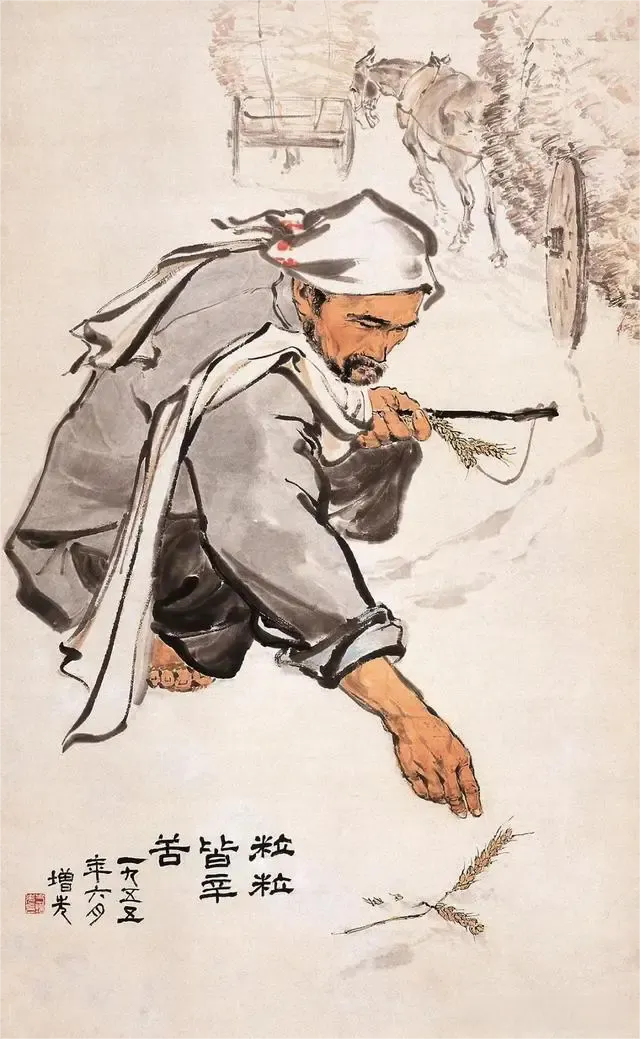
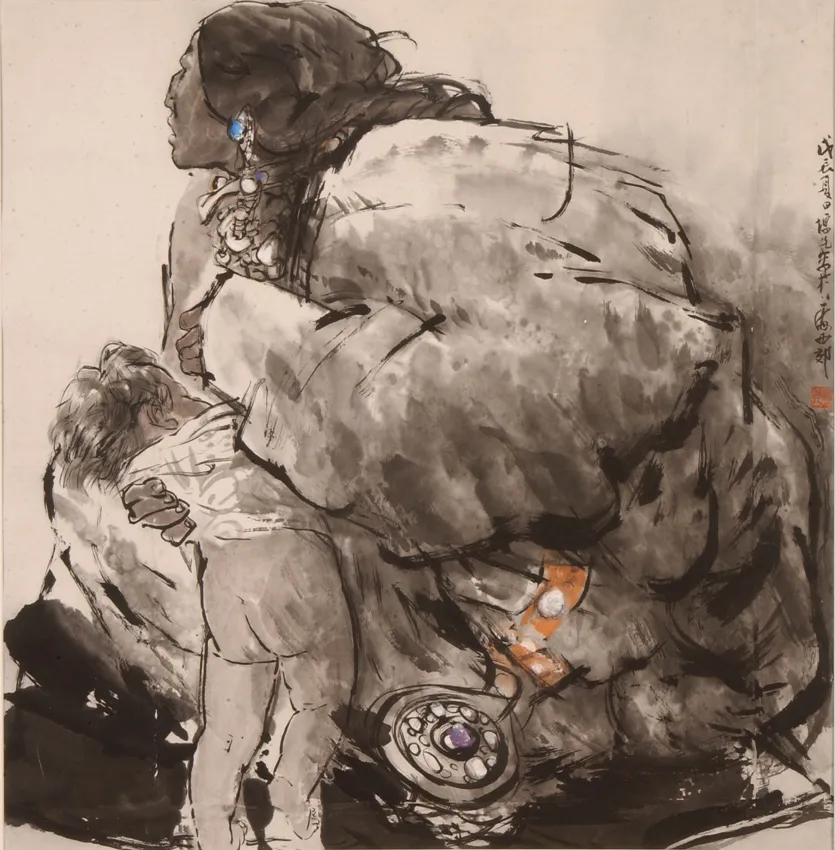

五十年代《粒粒皆辛苦》、六十年代《说红书》、七十年代《艳阳天》,皆方增先写实人物画之典范,亦浙派写实人物画之翘楚,乃时代艺术经典,蕴丰富之艺史、政社诸价值,象昔日不可磨灭之记忆,使人反思昔日,立足今朝。
二十世纪七十年代末,文革既终,中国文艺迎新春,极左文艺路线之尽,为艺本思考重启之门。时论“内容与形式”、“形式美”成焦点,艺者脱桎梏,探人性美,抒真挚情。方增先以热情赴创作,补传统画技不足,深入青海藏区,广行写生。
甲子年,方氏创文革后首要之作《帐篷里的笑声》,标志其艺探新境。二十世纪八十年代,中国文化思想活跃,对外窗口启,西方现代文艺理论、流派、思潮涌入,艺者视野大拓,尝试现代主义观念与手法,求自由表达,中国美术呈未有之多元格局。
In the 1950s, "Every Grain of Rice is Hard Earned"; in the 1960s, "Reading Red Books"; in the 1970s, "Sunny Days" are all exemplary works of Fang Zengxian's realist figure paintings and epitomes of the Zhejiang realist figure painting school. These works areics of the era, rich in artistic, historical, political, and social values, symbolizing indelible memories of the past, prompting reflection on bygone days and grounding in the present.
In the late 1970s, with the end of the Cultural Revolution, Chinese literature and art ushered in a new spring. The end of the ultra-left artistic line reopened the door to fundamental artistic thinking. Discussions on "content and form" and "formal beauty" became focal points. Artists broke free from shackles, exploring the beauty of human nature and expressing sincere emotions. Fang Zengxian, with great enthusiasm, engaged in creation, compensating for his deficiencies in traditional painting techniques, and traveled extensively to the Tibetan areas of Qinghai for sketching.
In the year of Jiazi, Fang created his first significant work after the Cultural Revolution, "Laughter in the Tent," marking a new stage in his artistic exploration. In the 1980s, Chinese cultural thought was active, with external windows opening, and Western modern art theories, schools, and trends flowing in. Artists broadened their horizons, experimenting with modernist concepts and techniques, seeking free expression, and Chinese art presented an unprecedented pluralistic pattern.
新时期,写实人物画不独尊,成多元艺一部分。政治影响渐弱,写实人物画如何出新路,成具时代特点与个性化语言之新貌,乃人物画家挑战。方增先于时代变迁与个人追求之双驱下,积极尝试,探索水墨人物画现代化新可能。
方增先于东西、古今之间苦求索。从西方现代艺术汲养,融于水墨人物,兼构成变形。研民间美术,溯历史,求传统笔墨与精神之助。反复琢磨文人画笔墨,融己作,十年画稿无数,锻自我语言,寻自我情感与精神之风格图式。
自青海写生,至古代诗意画、白描人物,继以积墨法、书法线条之探。方增先与时俱进,挑战自我,超越己身。宋代积墨法为山水画要技,方氏受启,引入人物画,以增厚重质感,立付诸行。
In the new era, realist figure painting no longer held exclusive dominance but became part of a diverse artistic landscape. With the weakening of political influence, the challenge for figure painters was how to forge new paths that bore the characteristics of the times and personalized language. Under the dual drive of changing times and personal pursuit, Fang Zengxian actively explored, seeking new possibilities for the modernization of ink figure painting.
Fang Zengxian diligently sought between East and West, ancient and modern. Drawing inspiration from Western modern art, he integrated it with ink figure painting, incorporating composition and deformation. He studied folk art, traced history, and sought the support of traditional brushwork and spiritual essence. Repeatedly pondering the brushwork of literati painting, he fused it into his works, producing countless drafts and sketches over ten years, refining his own language and seeking a personal style and ink language to express his emotions and spirit.
From Qinghai sketches to ancient poetic paintings and white-drawing figures, followed by explorations of ink accumulation and calligraphic lines, Fang Zengxian advanced with the times, challenging and surpassing himself. The ink accumulation method, a crucial technique in Song dynasty landscape painting, inspired Fang, who introduced it into figure painting to enhance the sense of weight and texture, immediately putting it into practice.

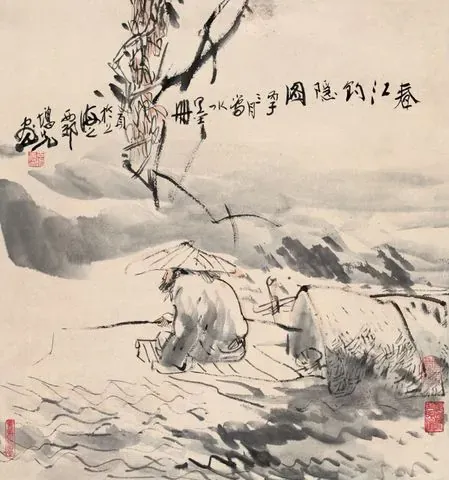
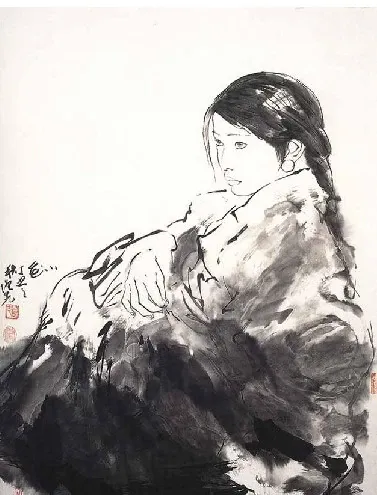
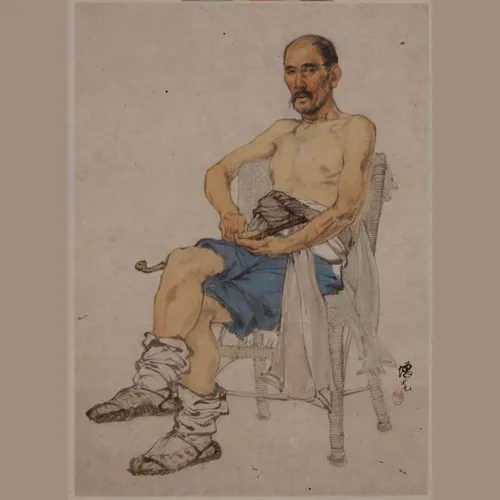


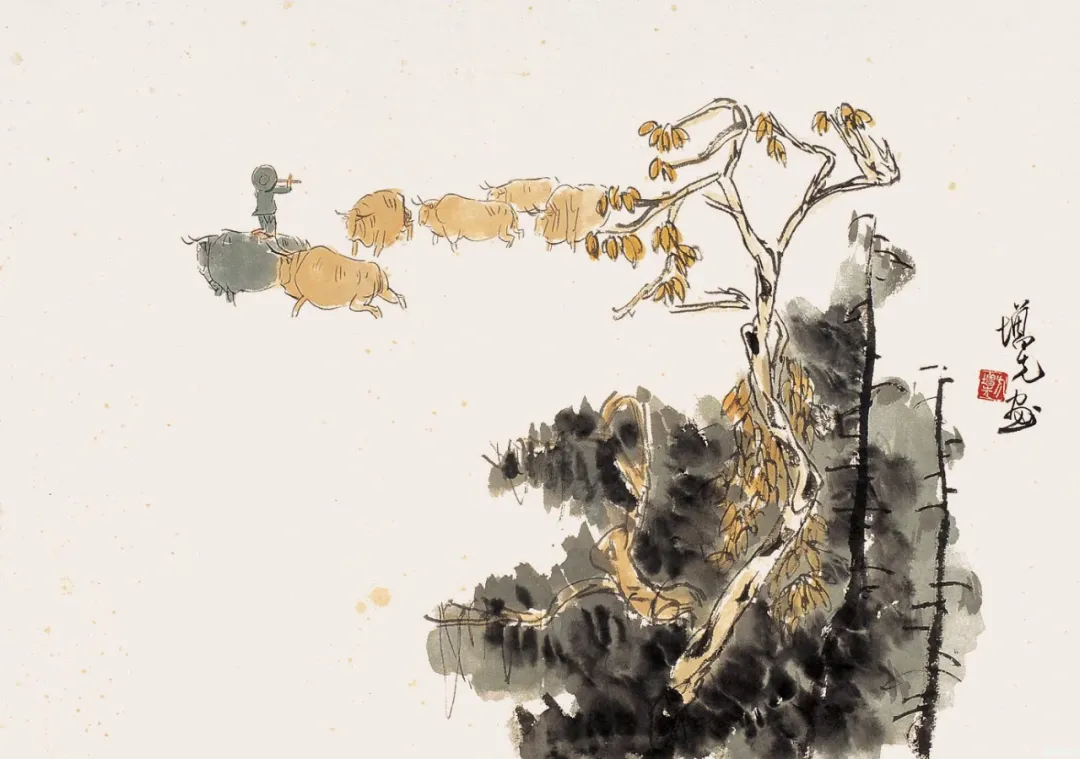
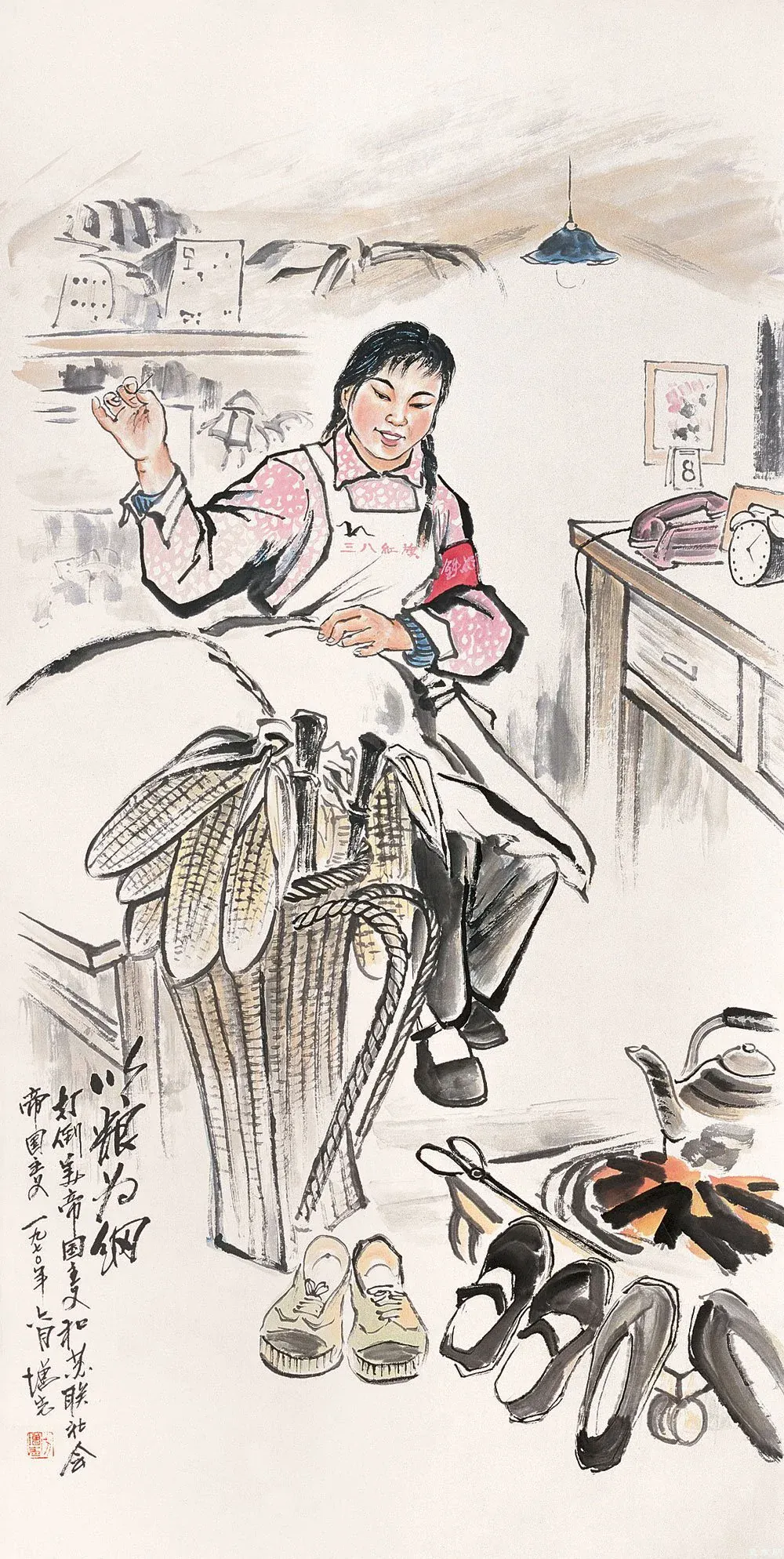
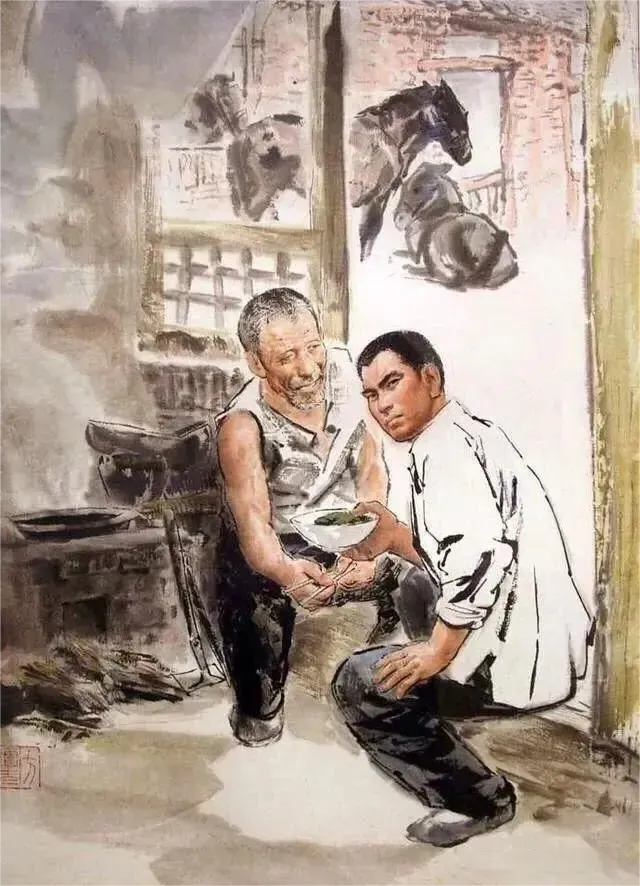
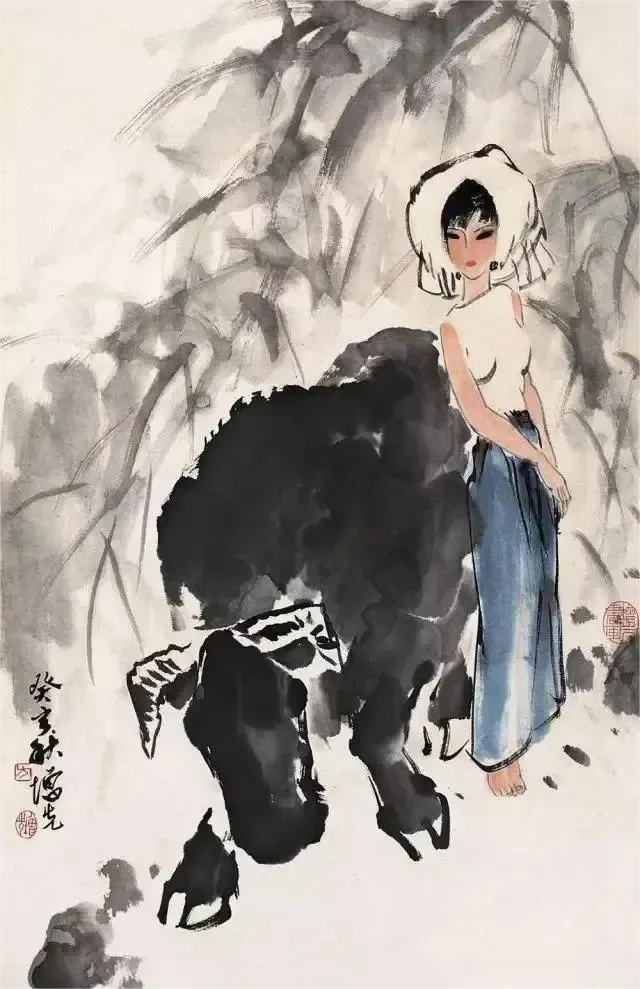
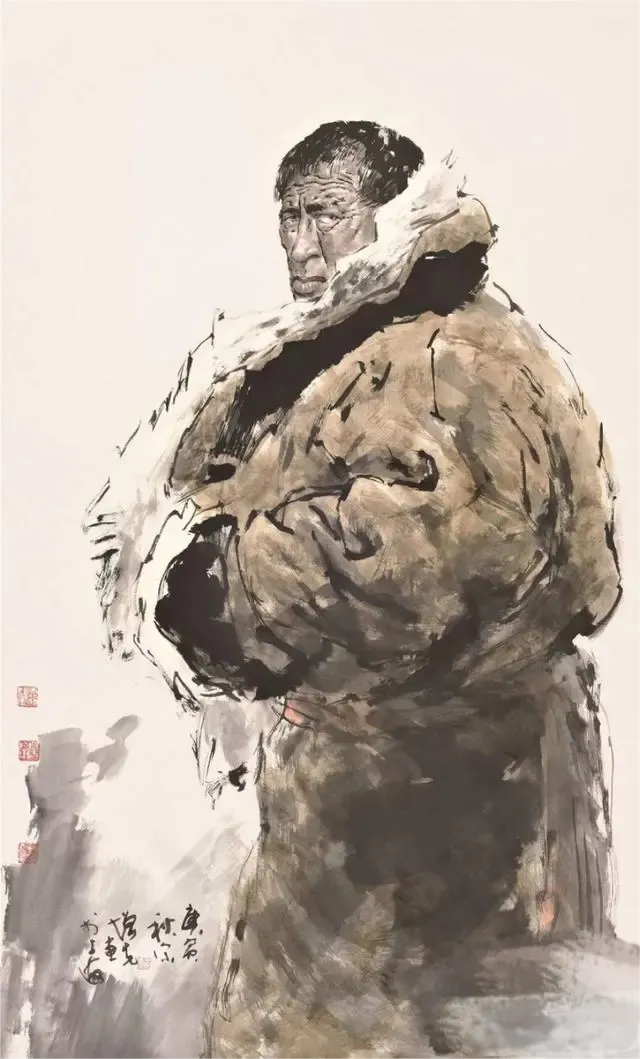

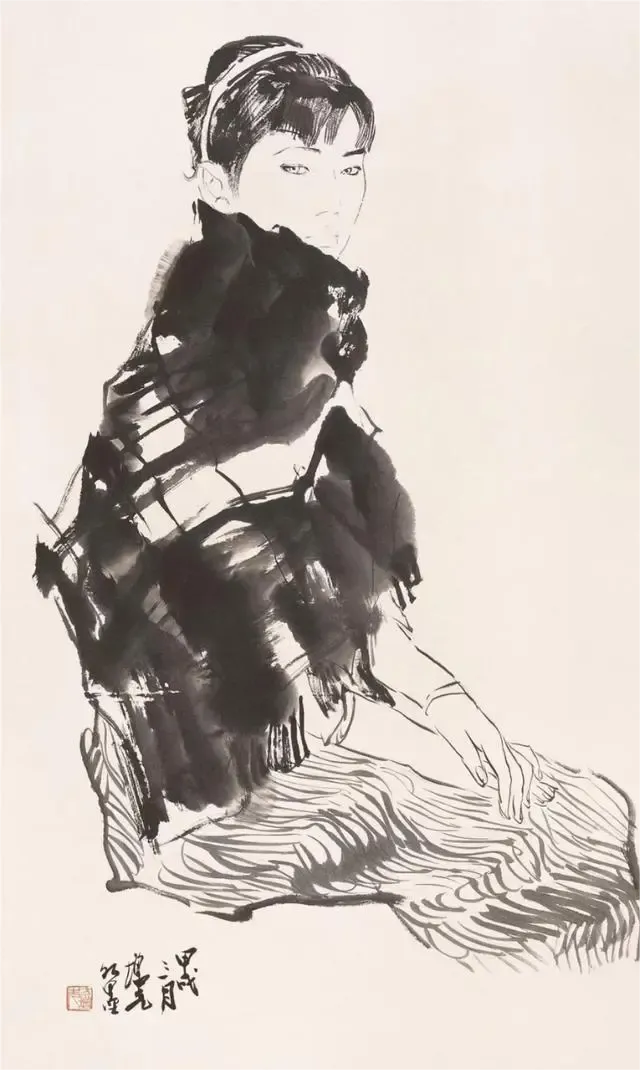
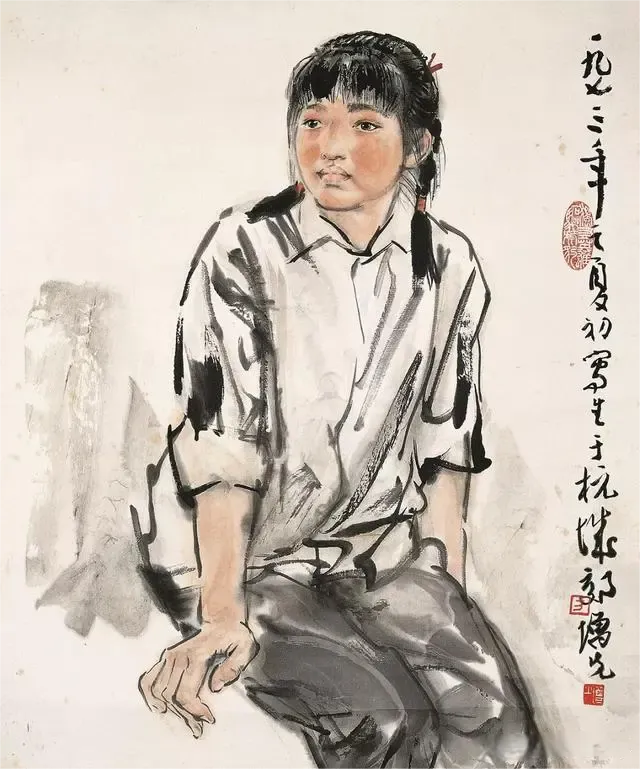
八十年代,方氏于古题、藏民题材人物画试积墨,初用衣饰,未及面部。辛巳后,积墨法用于人物之面、手、肌,增整体感与形式感,不拘西画光源,由笔墨黑白主宰,形象生动。积墨法显衣质,赋画特殊形式,凝重沉郁,岁月沧桑,现对农牧民之关怀。积墨法为方氏人物画要手段。《怀素书蕉》《祝酒舞》《梦》《佛珠》积墨初试告捷。《大山回音》《闲看行路人》《家乡板凳龙》积墨法臻成熟,炉火纯青。
方增先艺旅,因积墨法之成,入全新境界。造型坚实,积墨浑厚,书法清癯,创作观念,融为独特水墨人物风格,吸古今中外精华,成己之艺术天地。观其近作,题材内容,手法皆透自由。既有文人高雅,亦有牧民乡民生活之实。墨色浓淡,线条繁简,墨与线多寡,工写比重,构图平淡奇崛,气韵风流沉滞,各有侧重,人物生动多变,神韵俱佳。
写实为基,画面形态丰富,展无限想象力。以形写神,不拘形似,捕神韵气质,追画外之境、言外之意,尤显突出。方氏言:“体弱,然试书法入画,望笔墨中,加强意笔画‘意’之浓度。中国画‘意’,乃情绪由笔墨出。西方现代艺术,形式语言真心表达,亦在情绪内。”此言明形式与意境关系,揭创作真谛。
In the 1980s, Fang experimented with ink accumulation in ancient-themed and Tibetan-themed figure paintings, initially applying it to clothing and not yet to faces. After the year of Xinsi, he used the ink accumulation method on faces, hands, and muscles, enhancing the overall sense and form, unrestricted by Western light sources, dominated by the ink's black-and-white relationship, making the figures lively. The ink accumulation method revealed the texture of clothing, giving the painting a unique form, heavy and somber, reflecting the years' vicissitudes and showing care for farmers and herdsmen. This method became a crucial technique in Fang's figure painting. Works like "Huaisu Writing on Banana Leaves," "Drinking Dance," "Dream," and "Buddhist Beads" marked the initial success of this technique. "Echo of the Mountain," "Idle Watching Passersby," and "Hometown Bench Dragon" exemplified the mature use of ink accumulation, achieving mastery.
Fang Zengxian's artistic journey, marked by the success of the ink accumulation method, entered a new realm. His solid modeling, thick ink accumulation, crisp calligraphic lines, and creative concepts combined to form a unique ink figure painting style, absorbing the essence of ancient and modern, East and West, creating his own artistic world. Observing his recent works, the freedom in subject matter, content, and technique is evident. They embody both the elegance of literati and the reality of herdsmen and villagers' lives. The varying shades of ink, the complexity and simplicity of lines, the balance of ink and line, the ratio of detail to freehand, the plain and extraordinary composition, and the dynamic and static qi all have their emphases, making the figures lively and varied, with excellent spirit and charm.
Realism forms the foundation, yet the richness in the forms of his paintings demonstrates limitless imagination. By capturing the spirit through form, unbound by likeness, he strives to capture the essence and charm, pursuing meaning beyond the painting and words, making this pursuit particularly prominent. Fang said, "Though my body weakens, I try to integrate calligraphy into painting, hoping to enhance the 'intention' in freehand painting through brush and ink. The 'intention' in Chinese painting is an emotion expressed through brush and ink. In Western modern art, if the formal language expresses true intention, it also lies within the realm of emotion." This statement clarifies the relationship between form and intention, revealing the true essence of creation.
方增先谓,艺原创在于对宇宙、人生之感悟,对事物感受及情思之表达。感悟表达,贯穿其生,见于每作。探索创新,步入自由境地。每笔墨、线条,诉其对生活之理解与对艺不懈追求。己亥腊月,方增先与世长辞。
Fang Zengxian believes that artistic originality lies in the artist's perception of the universe and life, in the feeling of things and the expression of emotions and thoughts. This perception and expression run through his life, evident in every work. Through exploration and innovation, he has stepped into a realm of freedom. Each brushstroke and line narrates his understanding of life and relentless pursuit of art.In December 2019, Fang Zengxian passed away.
责任编辑:苗君
